Every now and then I’ll do a write-up on an install that went on someone else’s Jeep. I helped Les do his Super 44 axle swap a couple of months ago. He recently picked up a Currie Anti-Rock for his TJ. ScottK offered to host a wrenching party at his place so Les and I took him up on the opportunity. I did my radiator replacement and then we did Les’ Anti-Rock.
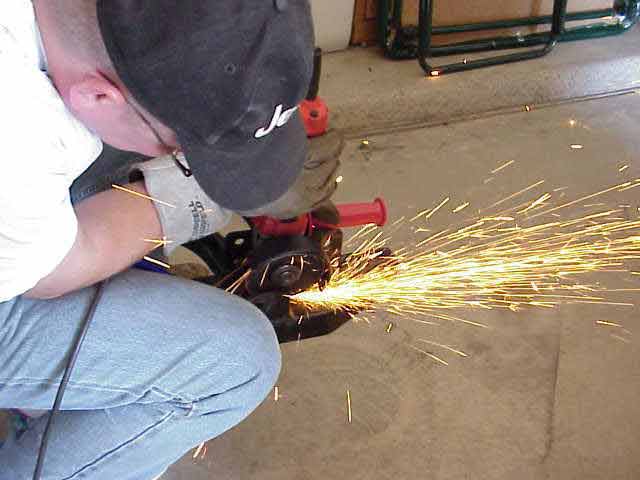
Les runs a Bullet Proof bumper on his TJ. The mounting brackets for the bumper cover part of the tubular cross member that the AntiRock mounts in. We all took a session with either the sawsall or the grinder. Here is Scott putting the finishing touches on with the angle grinder while Les and I read through the directions (yeah, OK, we admit that we did actually read them!)

We used a piece of 2×4 and a good sized hammer to fully seat the nylon inserts into the cross member. Before you do this, be sure to check the inside of the tube to ensure there are no burrs that will interfere with the insert. On Les’ TJ, one was nice and smooth and the other required a couple of passes with the die grinder before we placed the insert.
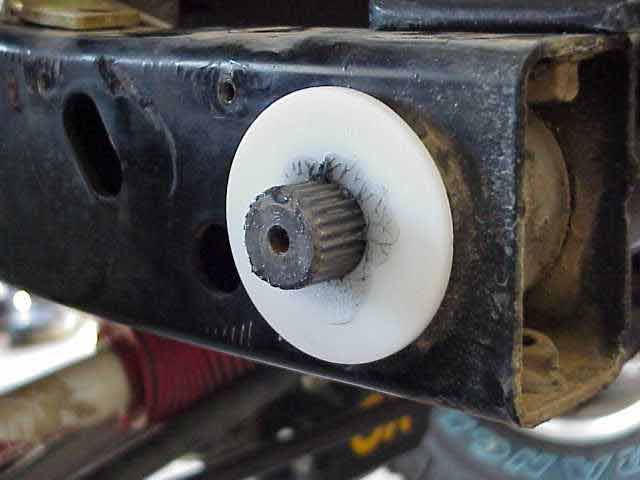
After both inserts are in place, apply a bit of grease to the end of the AntiRock bar before you tap it into place. The above photo shows the bar emerging from the opposite insert. Ensure that you have equal amounts of the shaft protruding from both inserts. We used the 2×4 on the end of the bar while tapping it into place with the hammer.
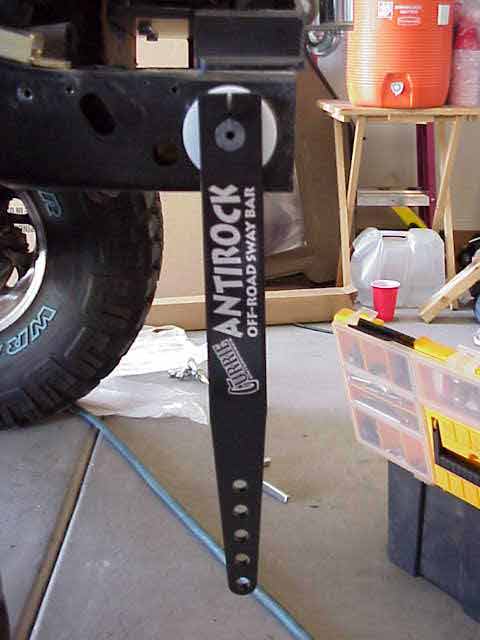
With the bar in place, slip the arms onto the end of the shaft. To make it easy to align both arms, install them vertically, rather than trying to hold them horizontal and hoping to get them parallel.
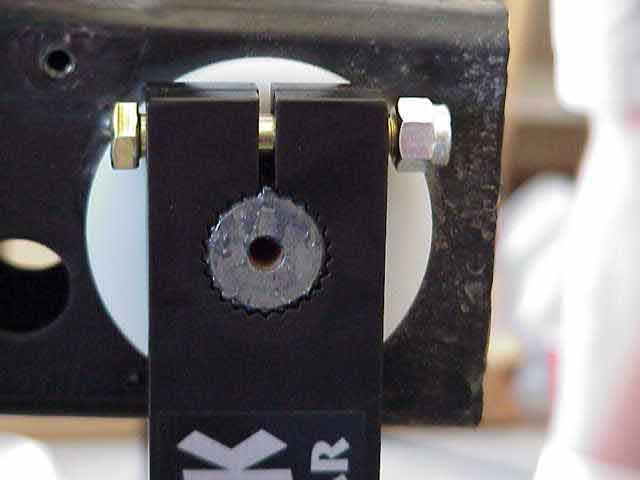
With the arms in place, very lightly tighten the bolt that holds it to the bar. You should be just able to barely move the arm back and forth on the bar. At this point, slide the the arm out to the end of the bar and just a bit further. When looking at the end of the bar, it should be recessed just a bit in the arm.
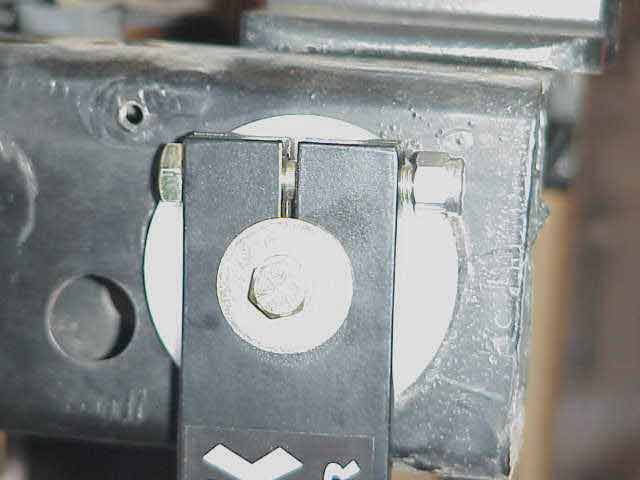
With the large washer and lock washer in place on the bolt, tighten the bolt in the end of the bar. This will push the arm back onto the bar and put it exactly flush with the end of the bar. Now tighten the bolt that clamps the arm onto the bar and you’ll be good to go. Repeat this same process on the other end of the bar.

Oops….Les remembers he needs to remove his old sway bar disconnect pins. They sure did the job for him while he was using them. I am still thinking about putting an AntiRock on Lady one of these days. There are still a couple of other things I need to do first. (yeah, the never ending list of mods!)
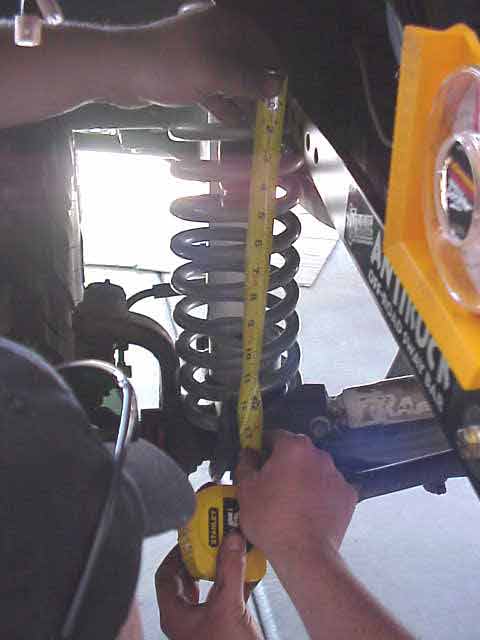
With the arms at their proper position, measure the distance between the two mounting points. You will need to select one of the mounting holes in the arm prior to taking this measurement. If need be, you can always change your mind and use a different mounting arm hole. It will be a compromise between on-road body roll and off-road flex. If you have a friend with an AntiRock, you might want to check with him/her and see what they suggest.
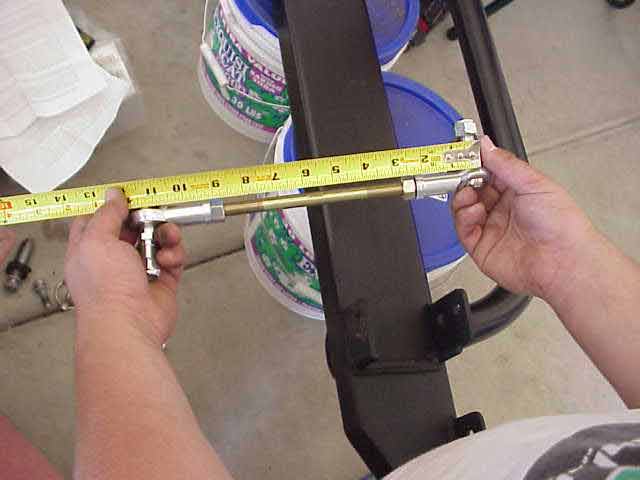
Adjust the link to the same dimensions that you measured on the vehicle. The threads on the links are pretty fine, so you should be able to dial them in so everything matches your measurements.

Insert the link into the arm hole and the hole where the disconnect pin was mounted. Tighten the mounting bolts and the snug down the jam nuts on the links. You should check all of your bolts after your first run to make sure none of them have backed off. It doesn’t take long too long for a loose bolt or jam nut to cause a problem.
That is it. The install is finished and now all you have to do is go out and enjoy your brand new Currie AntiRock bar.
Remember to TREADLightly!
NOTE: I finally got around to installing an Anti-Rock on my TJ too. I picked it up when I joined some friends at Johnson Valley for our Thanksgiving Day 2002 trail run. As expected, I have fully enjoyed having it. I run mine at the 2nd softest setting. I notice that I will lift a tire more on the trail than I previously did. I also notice that I don’t have nearly the body sway when working my way over medium sized rocks and such. Much better overall control of the vehicle….perhaps even more noticeable for me since I usually run a hard top. On road….yes, it is softer than the factory sway bar and yes, it does lean more in the corners. But I drive a Jeep and not a little foreign import like my wife does. If I want to go fast around the corners, I’ll use her car.
Currie AntiRock Upgrade
Note: I was asked by Scott if I would post this additional piece of information that he finds himself passing on to other folks after they get talking about the Currie AntiRock bar and links. He took the Currie links from the original install and moved them to the rear axle. He then built a new pair and installed them up front on the AntiRock bar. His comments and a couple of photos follow.
As discussed earlier, the links that come with the Currie Antirock are designed for 4″ of lift. This started out as a project to build new links for the rear using heim joints. I picked up the joints from Grainger and the other hardware from Copperstate Nut and Bolt (a local fastener store here in Phoenix). As I began assembling them, I realized that my heims were identical to those used on the Currie links. So instead of putting the new links in the rear, I made them a bit longer and used them up front. I then installed the original Currie links on the rear. The front AntiRock now sits at 11 degrees. It was at 8-9 degrees before installing the longer links. Supposedly this should allow more flex up front. I got the idea to do the heims in the rear from Robert Yates and others in California. They claim it allows a bit more flex than the standard links with bushings. My friends Jake W and Joey K ran with Robert when he was in town and Jake really noticed that the rear heims seemed to make a big difference.
The parts needed to build the new links:
4 1/2″-20 right hand Heim joints from Grainger
1/2″-20 3 foot long threaded rod
6 1/2″ washers
6 1/2″-20 nuts
2 1/2″-20 nylock nuts
Total cost of parts: Approx $50
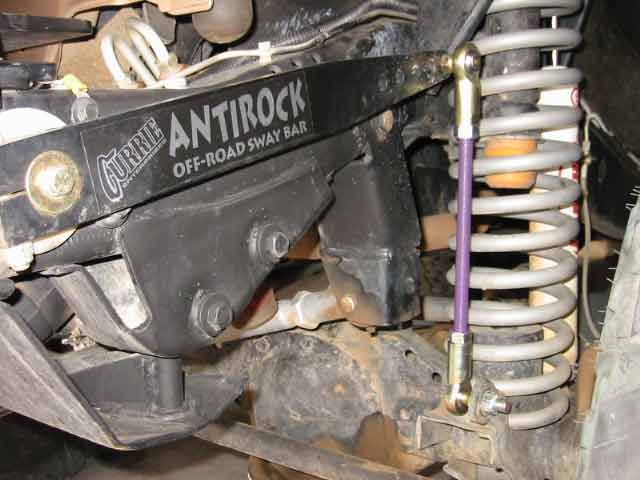
Here is a photo of Scott’s new front links. Yes, he does like purple. Most of the add-ons to his Jeep are detail in purple. We always manage to give him a ration of you know what about it, but he keeps doing it anyway. If it wasn’t for the color, you would be hard pressed to say they were not Currie links.

These are the original current links that Scott has moved to the rear. I don’t know if he was running extended links here (from when he installed his RE lift) but I assume he was. The links won’t bind back here like the standard links with bushings can. I’ll have to keep this little trick in mind when I do mine!
Update: After installing my new alumi-flex lift, it was obvious that my front links were too short. I had been running RE extended links in the rear. The tape measure showed that my existing AR links would fit in the rear and give me about 2″ more link length than I previously had. I acquired some heim joints from Granger and the new links for the AR went together just fine. The mounting holes in the rear factory sway bar had to be enlarged (remove the bar and use a drill press to do the work….the hand drill is a loosing battle!) so that the mounting bolts on the old AR heims would fit correctly.
